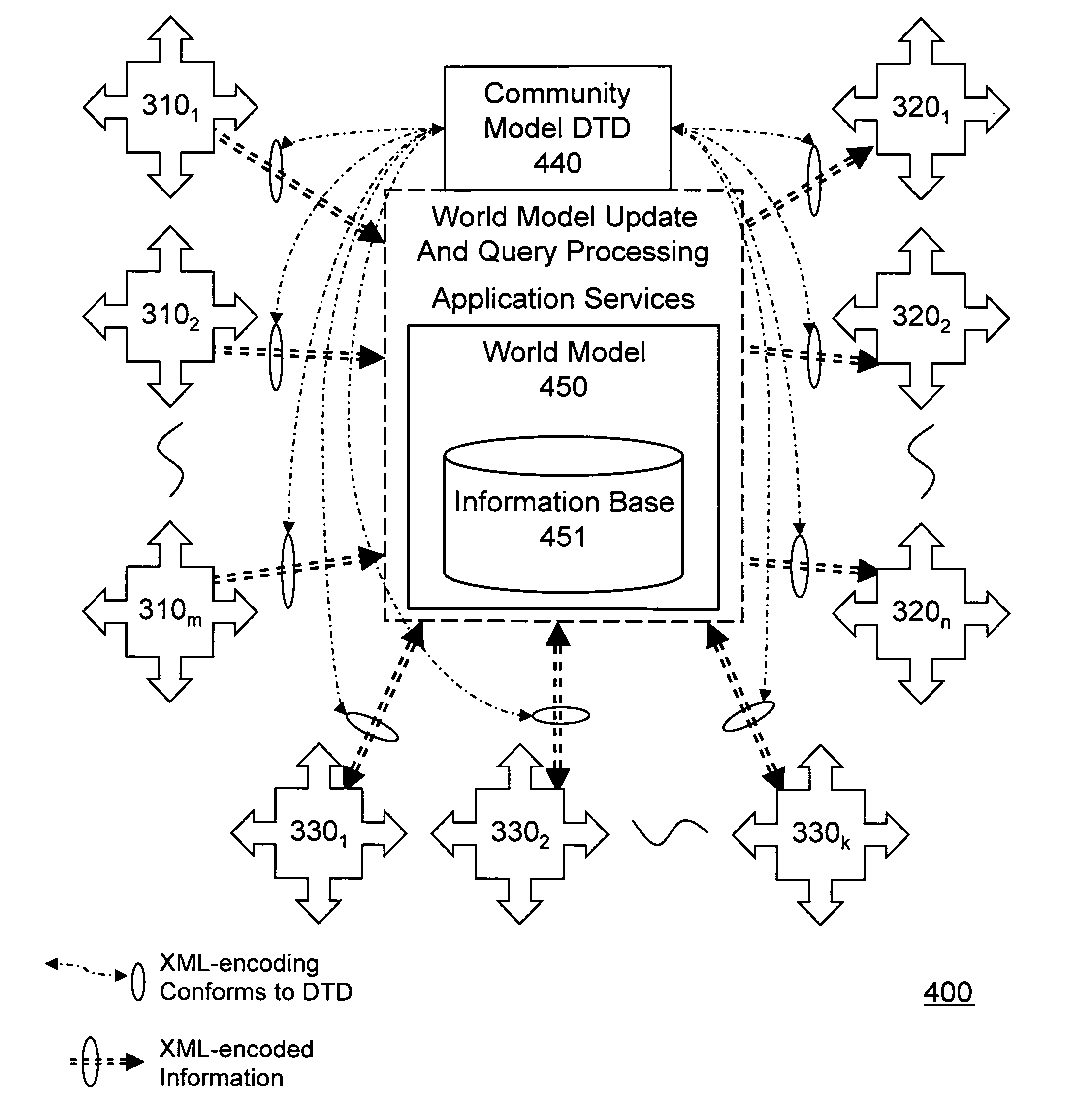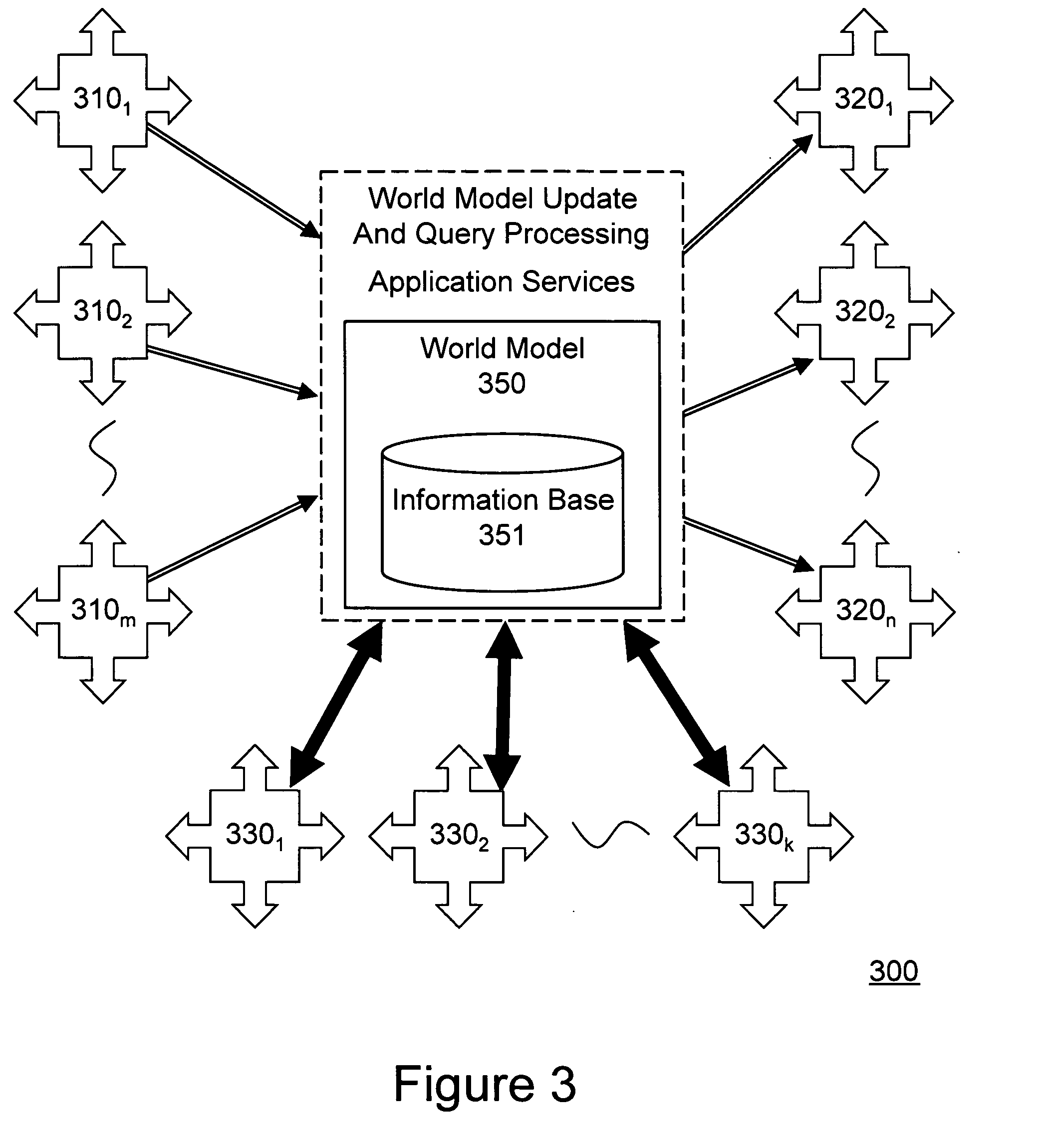Open community model for exchanging information in dynamic environments
a dynamic environment and information exchange technology, applied in the direction of navigation instruments, instruments, pulse techniques, etc., can solve the problems of inability to enable or allow the system 200, counterintuitive and counterproductive, and existing planning systems are limited in information type, completeness, accuracy, and timeliness of material information
- Summary
- Abstract
- Description
- Claims
- Application Information
AI Technical Summary
Benefits of technology
Problems solved by technology
Method used
Image
Examples
Embodiment Construction
[0030]While the Internet has provided a means of connecting many individuals and the World Wide Web Consortium (W3C) standards have provided certain means for describing what kind of information is in a text document, these technologies themselves do not create or maintain near-real-time models of dynamic environments nor make these models accessible to interested parties such as planners. On the other hand, without these standards, the vast number of planners will be unable to obtain the information they need from the largest number of most qualified suppliers. But for suppliers to know what type of information they should be providing, they will need to participate in some kind of an open community where individuals who use the supplied information for planning and executing are able to provide descriptions of needed or desired information and provide feedback on the quality and usefulness of the information provided by the various suppliers. Several barriers exist today that impe...
PUM
 Login to View More
Login to View More Abstract
Description
Claims
Application Information
 Login to View More
Login to View More - R&D
- Intellectual Property
- Life Sciences
- Materials
- Tech Scout
- Unparalleled Data Quality
- Higher Quality Content
- 60% Fewer Hallucinations
Browse by: Latest US Patents, China's latest patents, Technical Efficacy Thesaurus, Application Domain, Technology Topic, Popular Technical Reports.
© 2025 PatSnap. All rights reserved.Legal|Privacy policy|Modern Slavery Act Transparency Statement|Sitemap|About US| Contact US: help@patsnap.com



